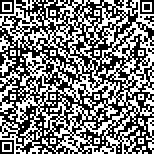陆世杰,李振宇,乔志钰,等.心脏外科术后患者早期的运动能力观察[J].中华物理医学与康复杂志,2021,43(3):231-235
扫码阅读全文

|
| 心脏外科术后患者早期的运动能力观察 |
|
| |
| DOI:10.3760/cma.j.issn.0254-1424.2021.03.008 |
| 中文关键词: 心脏外科手术 心肺运动试验 无氧阈 |
| 英文关键词: Cardiac surgery Cardiopulmonary exercise testing Exercise testing Anaerobic thresholds |
| 基金项目:北京市科委重大科技项目(Z171100001017083;Z19110700660000);国家科技支撑计划项目(2015BAI12B03) |
|
| 摘要点击次数: 5653 |
| 全文下载次数: 7309 |
| 中文摘要: |
| 目的 通过心肺运动试验观察心脏外科术后患者早期的运动能力特点。 方法 纳入安贞医院行心脏外科术后行早期心肺运动试验的患者,接受心脏外科手术后3个月内行心肺运动试验的患者40例,以手术日至心肺运动试验检查日的天数将患者分为出院组(术后30 d内,20例)、术后1月组(术后30~60 d,10例)和术后2月组(术后60~90 d,10例),探讨不同时段心脏外科术后患者的运动能力特点;另将20例出院组按手术类型又分为大血管组(9例)、搭桥组(6例)和瓣膜组(5例),并进一步观察不同手术类型患者出院时(术后30 d内)的运动能力,即观察不同时段和不同手术类型的所有患者从静息开始运动到无氧阈强度时的心率变化、收缩压变化,以及心肺运动试验指标(无氧阈、峰值摄氧量及二氧化碳通气当量)。 结果 所有患者均完成无氧阈值以上的心肺运动试验,未发生运动意外等不良事件。①不同时段患者的运动能力:出院组达到无氧阈时的心率上升(8.8±7.1)次/min,显著低于术后1月组[(17.0±5.9)次/min]和术后2月组[(18.3±10.5)次/min],且差异有统计学意义(P<0.05);出院组的无氧阈和峰值摄氧量分别为(8.0±1.5)和(11.0±2.9)ml/(kg·min),显著低于术后1月组[(11.2±3.1)和(15.6±4.2)ml/(kg·min)]和术后2月组[(11.9±2.6)和(15.7±2.8)ml/(kg·min)],差异均有统计学意义(P<0.05),而术后1月组与术后2月组的无氧阈和峰值摄氧量组间比较,差异均无统计学意义(P>0.05);各组患者收缩压变化值及二氧化碳通气当量的组间差异均无统计学意义(P>0.05)。②术后30 d内不同手术类型患者的运动能力:大血管组和搭桥组术后患者的无氧阈[(7.2±1.3)和(7.8±0.7)ml/(kg·min)]及峰值摄氧量[(10.4±2.9)和(9.4±1.3)ml/(kg·min)],分别明显低于瓣膜组[(9.6±1.5) ml/(kg·min)及(14.2±2.3)ml/(kg·min)] ,且差异有统计学意义(P<0.05)。 结论 心脏外科术后患者的运动能力在术后30~60 d显著提高,而大血管术和搭桥术患者术后30 d内的运动能力明显低于瓣膜术后患者。 |
| 英文摘要: |
| Objective To observe the motor capacity of patients early after cardiac surgery using a cardiopulmonary exercise test. Methods Patients who had performed a cardiopulmonary exercise test within 3 months after cardiac surgery were included in this retrospective study. Patients who took the test within 30 days of the operation formed a discharge group (n=20), those within 30 to 60 days and 60 to 90 days formed the one month and two month groups (n=10 for both). The discharge group was further divided into an aortic surgery group (n=9), a bypass surgery group (n=6) and a valve surgery group (n=5) according to their procedure. The exercise capacity of each person was measured in terms of the changes in heart rate and systolic pressure from the resting to the anaerobic threshold stage. Anaerobic threshold, peak oxygen uptake and carbon dioxide ventilation equivalent were also recorded. Results All of the patients completed the cardiopulmonary exercise test above the anaerobic threshold, and no adverse events such as exercise accidents occurred. At the anaerobic threshold the average heart rate of the discharge group was (8.8±7.1)bpm, significantly lower than the averages of the one month and two months groups: (17.0±5.9) and (18.3±10.5)bpm respectively. The average anaerobic thresholds and peak oxygen uptakes of the 1 month and 2 months groups were not significantly different, but they were all significantly higher than the discharge group′s averages. There were, however, no significant differences among the groups in the average changes in their systolic pressure and carbon dioxide ventilation equivalent. Moreover, the average anaerobic threshold and peak oxygen uptake of the aortic surgery group and the bypass surgery group were significantly lower than the valve surgery group′s averages. Conclusions Postoperative motor ability after cardiac surgery improves significantly for at least 30 days. Patients who have received aortic or bypass surgery have significantly lower exercise capacity than those after valve surgery. |
|
查看全文
查看/发表评论 下载PDF阅读器 |
| 关闭 |